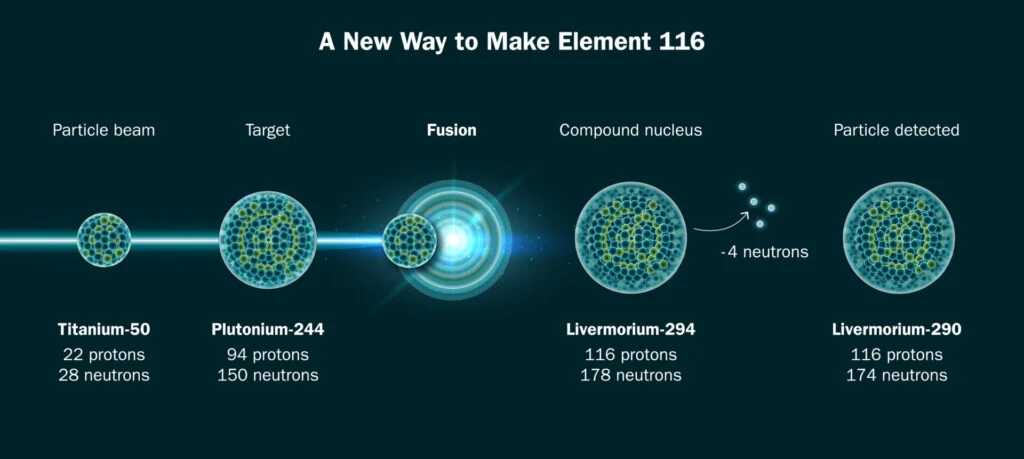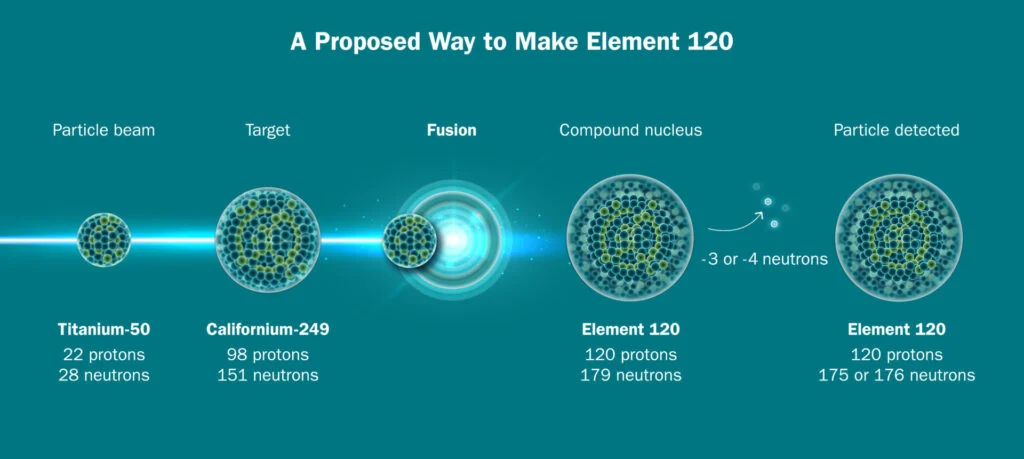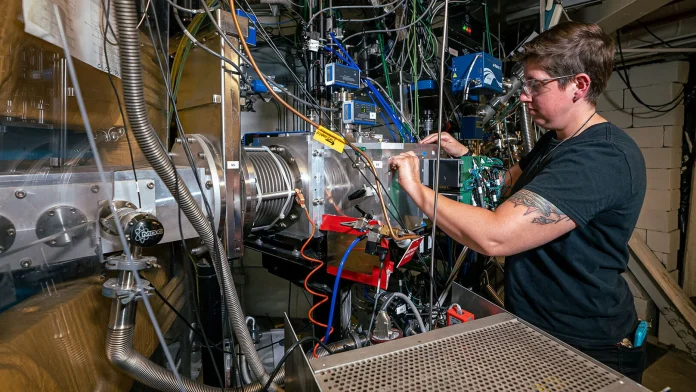Today, scientists at the Lawrence Berkeley National Laboratory in California achieved a milestone by successfully creating livermorium, also known as element 116, using a titanium particle beam for the first time.
This breakthrough brings scientists closer to the elusive “island of stability,” a theoretical region where superheavy elements are predicted to have longer lifespans, making them more suitable for detailed scientific study.
Reiner Kruecken, director of nuclear science at Berkeley Lab, remarked optimistically on the achievement, stating, “We needed for nature to be kind, and nature was kind. We think it will take about 10 times longer to make 120 than 116. It’s not easy, but it seems feasible now.”
The team officially announced their discovery today at the Nuclear Structure 2024 conference. Their comprehensive findings will soon be published on the preprint repository arXiv and have been submitted for peer review to Physical Review Letters.

Using a titanium beam, scientists successfully generated element 116, livermorium
The researchers utilized a beam of titanium-50, a specific isotope of titanium, in their endeavor to create element 116, livermorium. This accomplishment marks the heaviest element ever synthesized at Berkeley Lab, where researchers have been instrumental in discovering 16 elements to date, ranging from Technetium (43) to Seaborgium (106).
“We’re very confident that we’re seeing element 116 and its daughter particles,” stated Jacklyn Gates, a nuclear scientist at Berkeley Lab leading the recent effort. “There’s about a 1 in 1 trillion chance that it’s a statistical fluke.”
Scientists heated a chunk of the element to convert titanium into a usable beam until it reached nearly 3,000 degrees Fahrenheit (1,649 degrees Celsius). Subsequently, they bombarded the titanium with microwaves, stripping away 22 of its electrons and preparing the ions for acceleration in Berkeley Lab’s 88-inch Cyclotron.
“When we’re attempting to create these exceedingly rare elements, we are pushing the boundaries of human knowledge and understanding, with no guarantee that physics will behave predictably,” noted Jennifer Pore, a nuclear physicist in Berkeley Lab’s heavy element group. “The successful creation of element 116 using titanium validates this production method and paves the way for our pursuit of element 120.”
The titanium ions were directed at a target—plutonium in this instance—with trillions of ions impacting the target each second, resulting in the fusion into a completely different element. Over 22 days of continuous operations, the team successfully produced two atoms of livermorium. Using titanium in this manner represents a novel approach to synthesizing heavier elements; previously, elements 114 through 118 had been created using a beam of calcium-48.

Next on the agenda: the pursuit of element 120
Success in this endeavor would mark the creation of the heaviest atom ever produced. Element 120 is anticipated to belong to the hypothesized “island of stability,” a group of superheavy elements speculated to possess extended lifespans compared to previously discovered superheavy elements.
As per the laboratory’s announcement, efforts to generate element 120 could commence as early as 2025. If successful, it would take several years to complete the process. The physicists are delving into the depths of the periodic table, aiming to uncover an even heavier element with a longer existence.



 Viesearch - The Human-curated Search Engine
Blogarama - Blog Directory
Web Directory gma
Directory Master
http://tech.ellysdirectory.com
8e3055d3-6131-49a1-9717-82ccecc4bb7a
Viesearch - The Human-curated Search Engine
Blogarama - Blog Directory
Web Directory gma
Directory Master
http://tech.ellysdirectory.com
8e3055d3-6131-49a1-9717-82ccecc4bb7a